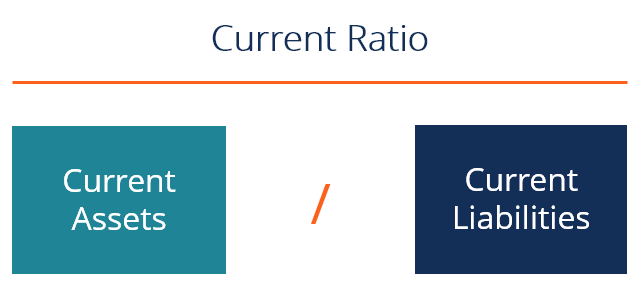The quick ratio, also known as the acid-test ratio, is a crucial financial metric used to measure a company’s short-term liquidity. It determines the company’s ability to cover its short-term liabilities using the most liquid assets, without relying on the sale of inventory. In this SEO-optimized blog, we will delve into the quick ratio, its calculation, significance, and how it helps assess a company’s financial health.
1. What is the Quick Ratio?
The quick ratio is a measure of a company’s ability to meet its short-term financial obligations using its most liquid assets. Unlike the current ratio, which includes all current assets, the quick ratio focuses only on assets that can be quickly converted into cash.
Quick assets typically include:
- Cash and Cash Equivalents: These are funds available immediately.
- Marketable Securities: Short-term investments that can be sold quickly.
- Accounts Receivable: Amounts owed to the company, which are expected to be collected soon.
The quick ratio excludes inventory because it may take longer to convert into cash, especially in industries where inventory is not immediately liquid.

2. Quick Ratio Formula
The formula for calculating the quick ratio is:Quick Ratio=Cash+Marketable Securities+Accounts ReceivableCurrent Liabilities\text{Quick Ratio} = \frac{\text{Cash} + \text{Marketable Securities} + \text{Accounts Receivable}}{\text{Current Liabilities}}Quick Ratio=Current LiabilitiesCash+Marketable Securities+Accounts Receivable
This formula helps calculate how easily a company can pay off its current liabilities using only its most liquid assets.
3. Example of Quick Ratio Calculation (in Indian Rupees)
Let’s take an example in Indian Rupees (INR). Suppose a company has the following financial data:
- Cash: ₹50,00,000
- Marketable Securities: ₹30,00,000
- Accounts Receivable: ₹20,00,000
- Inventory: ₹40,00,000
- Current Liabilities: ₹1,00,00,000
Using the quick ratio formula:Quick Ratio=Cash+Marketable Securities+Accounts ReceivableCurrent Liabilities=50,00,000+30,00,000+20,00,0001,00,00,000=1.0\text{Quick Ratio} = \frac{\text{Cash} + \text{Marketable Securities} + \text{Accounts Receivable}}{\text{Current Liabilities}} = \frac{50,00,000 + 30,00,000 + 20,00,000}{1,00,00,000} = 1.0Quick Ratio=Current LiabilitiesCash+Marketable Securities+Accounts Receivable=1,00,00,00050,00,000+30,00,000+20,00,000=1.0
A quick ratio of 1.0 indicates that the company has just enough liquid assets to cover its short-term liabilities.
4. What is a Good Quick Ratio?
A quick ratio of 1.0 or higher is generally considered healthy for most businesses, as it suggests the company can cover its short-term liabilities with its liquid assets. However, the ideal quick ratio varies depending on the industry.
For example:
- Manufacturing companies might have a lower quick ratio due to high levels of inventory.
- Service-based industries often have higher quick ratios as they rely more on cash and receivables and less on inventory.
5. Significance of the Quick Ratio in Financial Analysis
- Liquidity Assessment: The quick ratio provides a clear view of a company’s short-term financial health by focusing on liquid assets that can be quickly accessed to cover immediate liabilities.
- Investor Confidence: Investors and stakeholders use the quick ratio to assess a company’s ability to manage short-term financial risks. A higher quick ratio can indicate financial stability, attracting investors.
- Creditworthiness: Creditors rely on the quick ratio to evaluate a company’s ability to repay short-term loans or debts. A company with a strong quick ratio is more likely to secure loans on favorable terms.
Limitations of the Quick Ratio
While the quick ratio is a valuable liquidity metric, it has its limitations:
- Exclusion of Inventory: In businesses where inventory is quickly converted into cash, excluding it may underestimate a company’s liquidity.
- Reliance on Accounts Receivable: The quick ratio assumes that all receivables will be collected promptly. Delays in payment or defaults may affect the actual liquidity.
- Industry Variations: Different industries have different standards for a “good” quick ratio. Therefore, comparisons should be made within the same industry.
How to Improve the Quick Ratio
If your company’s quick ratio is below the desired level, consider the following strategies:
- Increase Cash Reserves: Set aside more liquid funds to ensure quick access when liabilities are due.
- Speed Up Receivable Collections: Implement strategies to accelerate the collection of receivables to boost liquid assets.
- Pay Off Short-Term Liabilities: Reducing current liabilities can instantly improve the quick ratio.
- Minimize Reliance on Inventory: Since inventory is excluded from the quick ratio, optimizing inventory management can free up liquid assets for other uses.
Quick Ratio vs. Current Ratio: What’s the Difference?
While both the quick ratio and the current ratio measure a company’s ability to meet its short-term liabilities, there are key differences:
- The current ratio includes all current assets, such as inventory, in the calculation, making it a broader measure of liquidity.
- The quick ratio excludes inventory, focusing solely on the most liquid assets.
The quick ratio is considered a more conservative measure of liquidity, making it especially useful in industries where inventory turnover is slow.
| Metric | Quick Ratio | Current Ratio |
|---|---|---|
| Definition | Measures ability to cover liabilities using only liquid assets | Measures ability to cover liabilities using all current assets |
| Includes | Cash, marketable securities, accounts receivable | Cash, marketable securities, accounts receivable, and inventory |
| Excludes | Inventory | None |
| Conservative | Yes | No |
FAQs on Quick Ratio
1. What does a quick ratio of less than 1 mean?
A quick ratio of less than 1 indicates that a company may not have enough liquid assets to cover its short-term liabilities, signaling potential liquidity issues.
2. How often should a company monitor its quick ratio?
A company should monitor its quick ratio regularly, especially if it operates in industries with tight liquidity margins or fluctuating cash flow.
3. Can a high quick ratio be a bad sign?
A very high quick ratio may suggest that a company is not investing its resources effectively, potentially hoarding cash instead of using it for growth or expansion.
Conclusion
The quick ratio is a key indicator of a company’s short-term financial health. By focusing on the most liquid assets, it offers a clear view of how easily a company can meet its immediate financial obligations. While a quick ratio of 1.0 or higher is generally desirable, it’s essential to consider industry norms and business-specific factors.
Maintaining a strong quick ratio not only enhances a company’s creditworthiness but also builds investor confidence. By regularly monitoring this ratio and taking steps to improve it when necessary, businesses can ensure financial stability and success.



